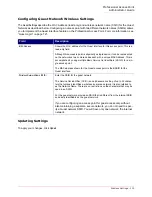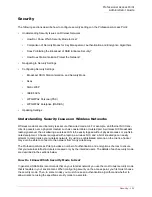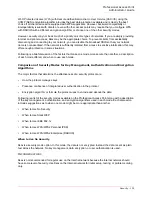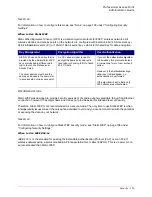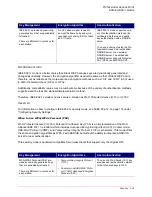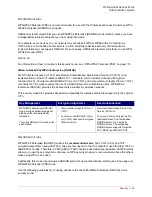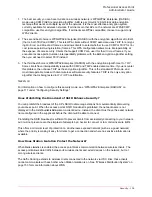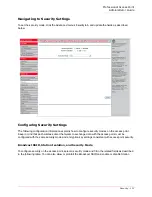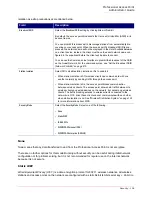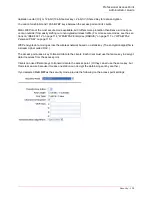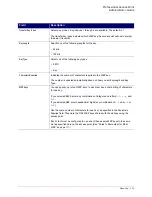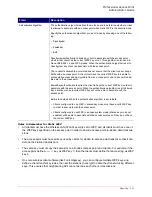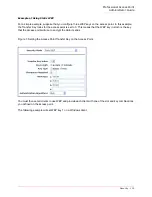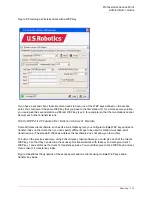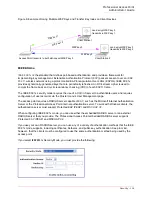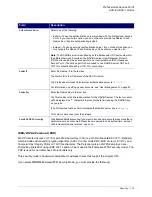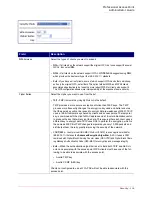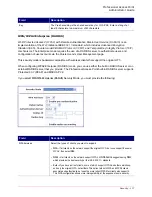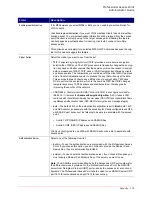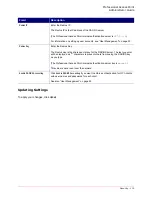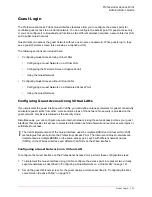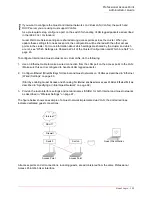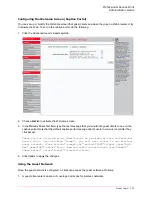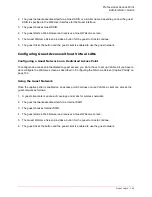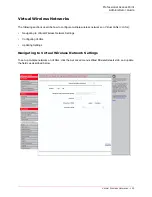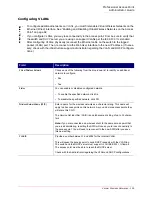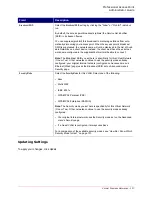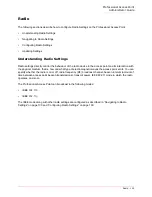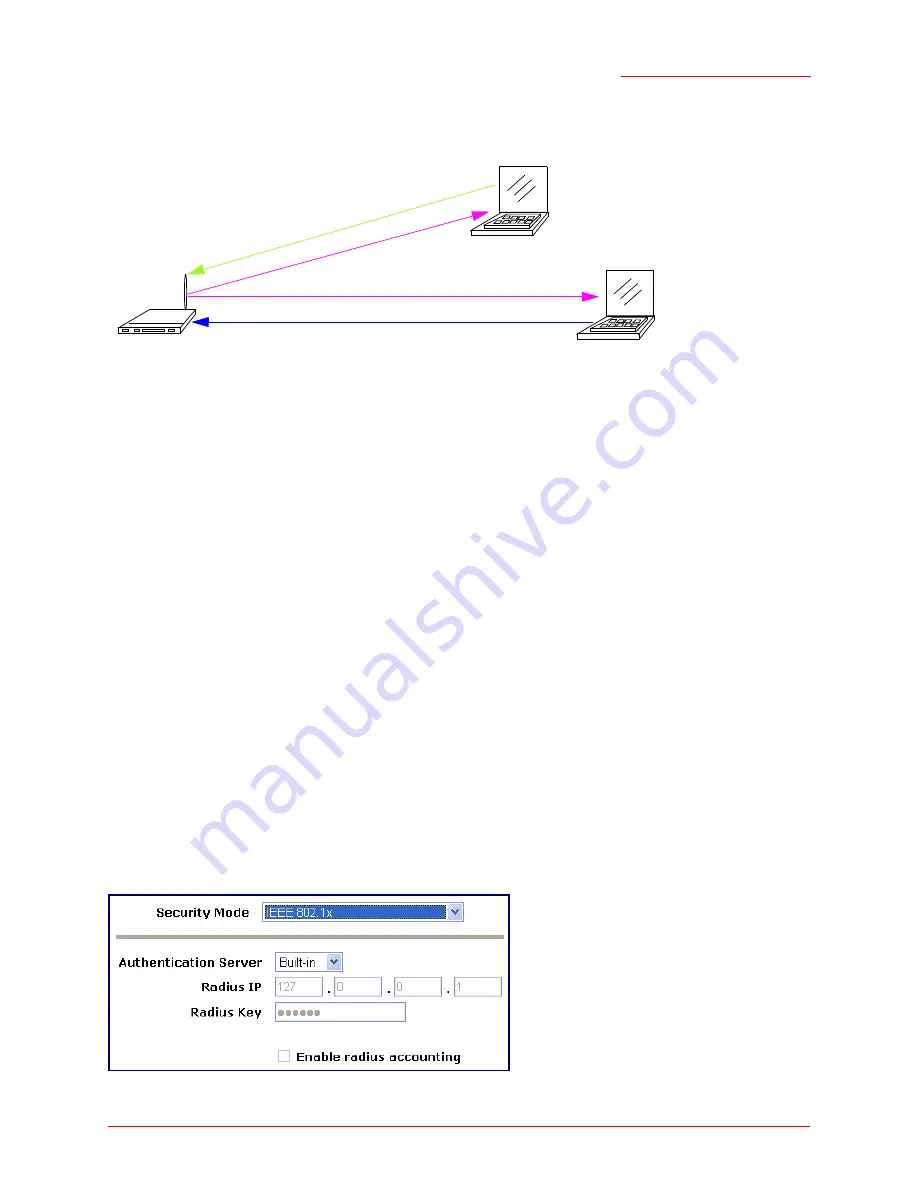
Professional Access Point
Administrator Guide
Security - 114
Figure 9. Example of Using Multiple WEP Keys and Transfer Key Index on Client Devices
IEEE 802.1x
IEEE
802.1x
is the standard that defines port-based authentication and provides a framework for
implementing key management. Extensible Authentication Protocol (
EAP
) packets are sent over an
IEEE
802.11
wireless network using a protocol called EAP Encapsulation Over LANs (EAPOL). IEEE 802.1x
provides dynamically-generated keys that are periodically refreshed. An RC4 stream cipher is used to
encrypt the frame body and cyclic redundancy checking (CRC) of each 802.11 frame.
The IEEE 802.1x security mode requires the use of a
RADIUS
server to authenticate users and requires
configuration of user accounts via the Cluster menu’s User Management page.
The access point requires a RADIUS server capable of
EAP
, such as the Microsoft Internet Authentication
Server or the Professional Access Point internal authentication server. To work with Windows clients, the
authentication server must support Protected EAP (PEAP) and
MSCHAP V2
.
When configuring IEEE 802.1x mode, you can use either the embedded RADIUS server or an external
RADIUS server that you provide. The Professional Access Point embedded RADIUS server supports
Protected
EAP
(PEAP) and MSCHAP V2.
If you use your own RADIUS server, you can use any of a variety of authentication methods that the IEEE
802.1x mode supports, including certificates, Kerberos, and public key authentication. Keep in mind,
however, that the clients must be configured to use the same authentication method being used by the
access point.
If you select
IEEE 802.1x
Security Mode, you must provide the following:
Access Point transmits to both stations with WEP key 3
Client Station 1
Client Station 2
WEP
key 3
WEP key 3
WEP key 2
WEP
key 1
can decrypt WEP key 3
transmits in WEP key 1
can decrypt WEP key 3
transmits in WEP key 2
Summary of Contents for Instant802 APSDK
Page 1: ...Professional Access Point Administrator Guide R46 1224 00 rev 2 0 07 06...
Page 2: ......
Page 4: ...Professional Access Point Administrator Guide iv...
Page 8: ...Professional Access Point Administrator Guide viii...
Page 42: ...Professional Access Point Administrator Guide Basic Settings 42...
Page 52: ...Professional Access Point Administrator Guide Access Points 52...
Page 58: ...Professional Access Point Administrator Guide User Management 58...
Page 62: ...Professional Access Point Administrator Guide Sessions 62...
Page 70: ...Professional Access Point Administrator Guide Channel Management 70...
Page 88: ...Professional Access Point Administrator Guide Neighboring Access Points 88...
Page 96: ...Professional Access Point Administrator Guide Ethernet Wired Settings 96...
Page 120: ...Professional Access Point Administrator Guide Security 120...
Page 128: ...Professional Access Point Administrator Guide Virtual Wireless Networks 128...
Page 134: ...Professional Access Point Administrator Guide Radio 134...
Page 138: ...Professional Access Point Administrator Guide MAC Filtering 138...
Page 152: ...Professional Access Point Administrator Guide Quality of Service 152...
Page 160: ...Professional Access Point Administrator Guide Wireless Distribution System 160...
Page 164: ...Professional Access Point Administrator Guide Time Protocol 164...
Page 170: ...Professional Access Point Administrator Guide SNMP 170...
Page 290: ...Professional Access Point Administrator Guide Configuration Troubleshooting 290...
Page 298: ...Professional Access Point Administrator Guide Regulatory Information 298...
Page 328: ...Professional Access Point Administrator Guide Index 328...

